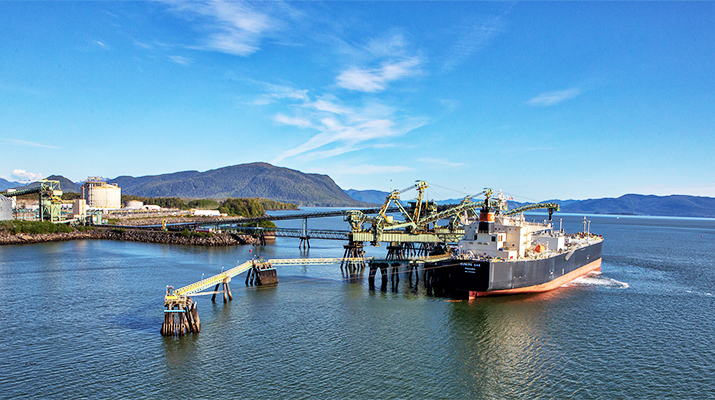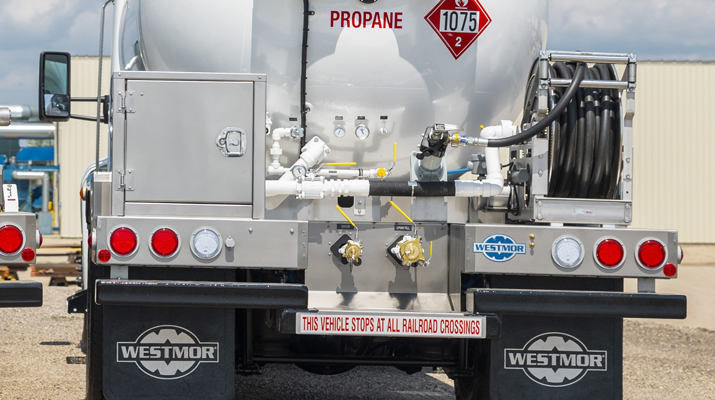2018 boasts positive economic outlook

Propane retailers help to drive growth with each new delivery of propane. Confidence among businesses and consumers is yet another driver of growth. Photo courtesy of Freightliner Custom Chassis Corp.
Fair weather ahead: That’s the economic forecast for 2018. Business operations should benefit from an improving employment picture, growing disposable consumer income and an easy credit environment.
“The United States economy continues to power forward,” says Sophia Koropeckyj, managing director of industry economics at Moody’s Analytics, a research firm based in West Chester, Pennsylvania.
“Furthermore,” she adds, “For the first time during the nation’s eight-year expansion there are no serious impediments to growth.”
Brisk tailwinds should keep the economy in full sail for the near future.
“Consumers are benefiting from a strong job market, their balance sheets are healthy and credit is flowing freely,” Koropeckyj says. “A revival in profitability, record stock prices and rock-bottom borrowing costs are buoying businesses.”
She notes that even the global picture is brighter, as “all of the major economies are expanding in unison for the first time in a decade.”
Steady growth
For 2018, Moody’s expects gross domestic product, the most common measure of economic growth, to increase by 2.9 percent, thanks mostly to stronger growth in residential investment and government spending. That’s a healthy jump from the 2.19 percent expected to be recorded for 2017 when numbers are finally tallied, a figure which was itself a boost from the 1.49 percent of the previous year.
A strengthening labor market should put more spendable cash in consumers’ pockets, helping to accelerate business activity in general.
“We expect well over 2 million jobs to be created in 2017,” Koropeckyj says. “This is about the same growth experienced since the expansion began over eight years ago.”
Strong job growth resulted in an unemployment rate of 4.4 percent by the end of 2017, a figure which is expected to fall to 3.94 percent by the end of 2018.
As unemployment declines, employers have more difficulty finding sufficient workers. That bodes well for wage growth, and for a resultant increase in consumer income.
“Most measures of wage rates are showing some acceleration and pay increases remain in the headlines,” says Scott Hoyt, senior director of consumer economics for Moody’s.
Average hourly earnings are expected to grow by 3 percent in 2018, up from the 2.6 percent increase of 2017, which was little changed from the previous year.
Business confidence
Confidence among consumers and businesses is yet another driver of growth. Here the news is good.
“Consumer confidence remains high,” Hoyt says. “It jumped following the presidential election, and the tapering back down that many of us anticipated has not occurred.”
Businesspeople, for their part, seem confident, as well, and appear willing to invest. Moody’s expects business investment to increase by 4.5 percent in 2018, up from an anticipated 4.07 percent figure for 2017.
“Nonresidential investment has improved following the swoon caused by the collapse in oil prices,” Koropeckyj says. “Equipment outlays and intellectual property products are both growing strongly. And accelerated wage growth could spur firms to spend more on equipment and technologies that reduce the need for workers.”
And then there is the business-friendly environment of the nation’s capital.
“A favorable business climate, particularly a relaxation in various regulations, could boost investment spending more than expected,” Koropeckyj notes.
Adding fuel to this fire is an upswing in corporate profits, which are expected to rise by 4.5 percent in 2018, a good increase over the 4.07 percent figure expected when 2017 numbers are finally tallied.
“Low costs and sturdy revenue growth have bolstered profits,” Koropeckyj says.
While both conditions are expected to extend over the coming months, stronger profits in 2018 depend on the delivery of lower corporate taxes.
Businesses looking for expansion capital are in a favorable position.
“Banks are eager to lend,” says Walter Simson, principal of Chatham, New Jersey-based Ventor Consulting. “And the borrower has a lot of power when it comes to pricing and conditions of the loan.”
Looming risks
Favorable as the forecast is, uncertainties in Washington might spark problems.
“We have built some corporate tax cuts into our forecast,” Hoyt says. “If they don’t happen, our forecast is too strong. And if personal tax cuts are instituted, our forecast is too weak. We are also assuming there is some increase in federal infrastructure spending.”
The picture could further darken if President Trump institutes the protectionist measures promised during his campaign.
“The president has an agenda which is somewhat protectionist and I think we need the exact opposite,” says John Manzella, a speaker on global business and economics and CEO of World Trade Center Buffalo Niagara.
He notes, “We actually need more agreements for free trade, which is extremely beneficial to the U.S. economy.”
At least there has been no recent talk about a border adjustment tax, Manzella notes.
“That would result in many lost jobs. While the president has focused on the trade deficit, we need to realize that more than half of imports represent intermediate goods used in the production of U.S. products. This makes our goods more competitive around the world. Imports also reduce prices and stretch the consumer dollar.”
Housing struggles
Housing activity, a key driver of economic growth and consumer spending, is bringing up the rear.
“Housing starts remain disappointing,” Koropeckyj says.
Moody’s expects 2017 starts to increase by 5.17 percent, to 1.24 million, when numbers are finally tallied. That’s lower than the expected 1.64 million, and represents a rate of increase noticeably below the 6.34 percent jump clocked in 2016.
The culprit? Neither demand (which is robust) nor credit availability (which is strong). Instead, a tight labor market is leaving an impact, limiting the capacity for new construction.
Furthermore, it’s expected that a good portion of available workers will be siphoned off for the reconstruction of buildings damaged by Hurricanes Harvey and Irma. Put it all together and it means a substantial backlog in the construction of single-family homes and apartments.
Despite the downside risk of labor shortages, Moody’s forecasts a robust 26.11 percent increase in 2018 housing starts.
“The combination of increased housing permits and reconstruction in the aftermath of Harvey and Irma will keep demand for housing starts at a hot burn,” Koropeckyj says.
Financial risks
Finally, business owners should keep a watchful eye on the health of the banking industry.
“I continue to worry about the strength of the financial system,” Simson says. “When the value of assets such as the stock market and real estate goes up, that usually means there is too much easy money in the system.”
The nature of the nation’s increasing debt loads also worries Simson.
“Student loans, credit card debt and longer-term auto loans are continually increasing,” he says. “So are derivative-backed certificates of deposit, which carry high rates of return and carry higher risk than many people realize. Finally, we are also seeing the bundling of loans that got us into trouble in 2008.”
The end result? According to Simson, high-risk loans put the whole banking system at risk if lenders cannot collect.
Running start
In the early months of 2018, some key indicators may offer clues to the year’s economic trajectory. First, suggests Hoyt, keep an eye on what is happening in Washington.
“Will there be a program of fiscal stimulus?” he asks. “If so, that will bolster the economic environment.”
Hoyt also suggests staying alert to reports of wage increases, which would stimulate consumer spending.
A favorable operating environment can provide the opportunity to strengthen internal controls.
“When you foresee a year of steady economic growth, it’s time to take the opportunity to look inside the walls of your organization and determine how you can improve your execution, your strategies and your financial systems,” Simson says.
“Make sure you understand your costs and are ready to react quickly to changes in the market,” he adds. “As for employees, go for the ‘A players’ rather than settling for the ‘C’ ones.”
In all cases, Simson notes, emphasize stronger internal operations.
“Batten the hatches,” he says. “Keep asking yourself, ‘How can I strengthen my organization for the long term?’”
















